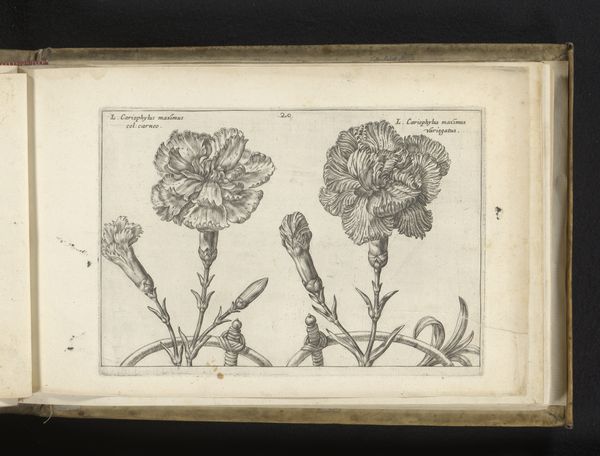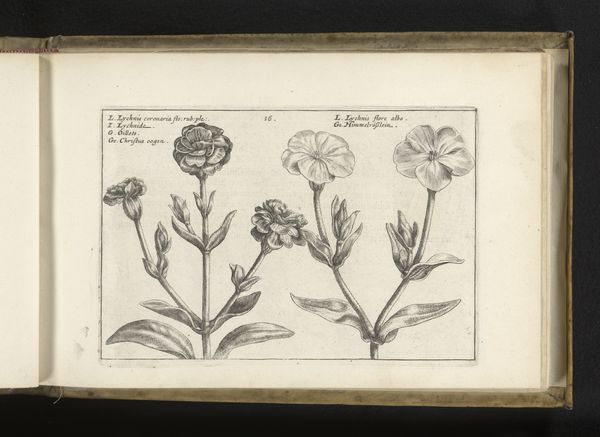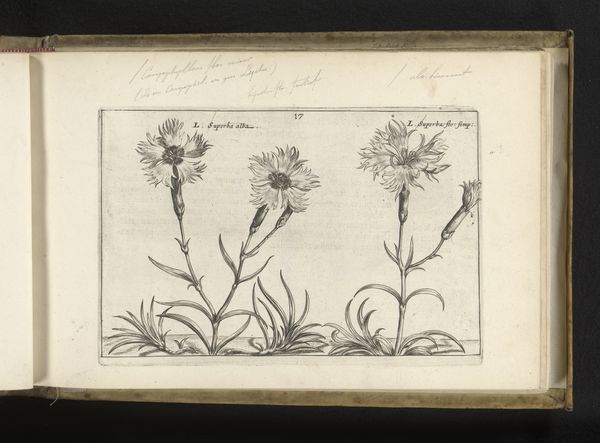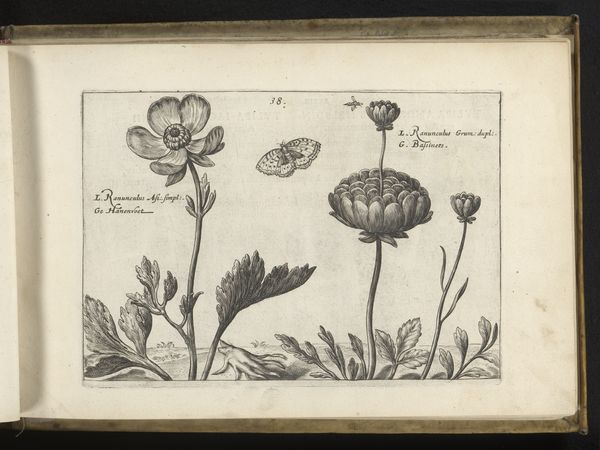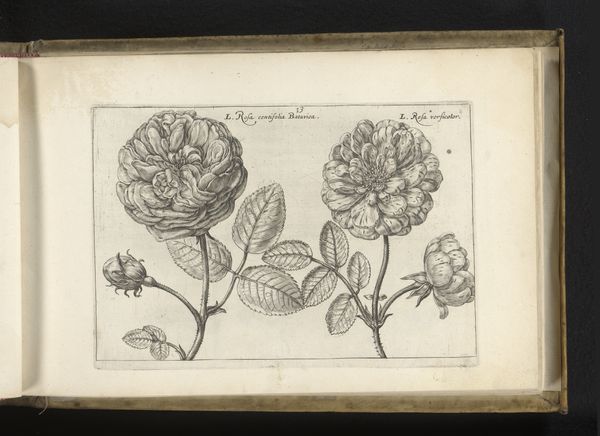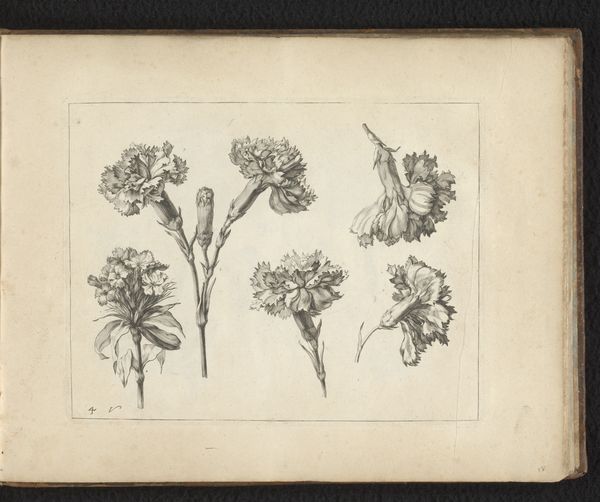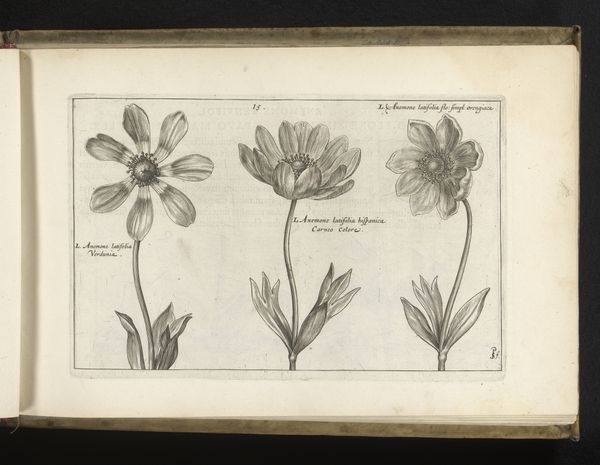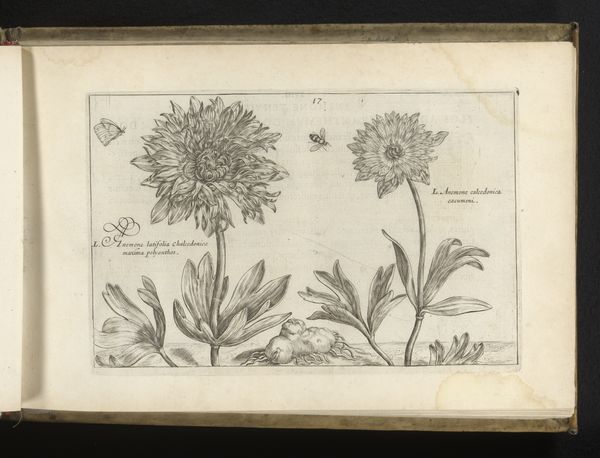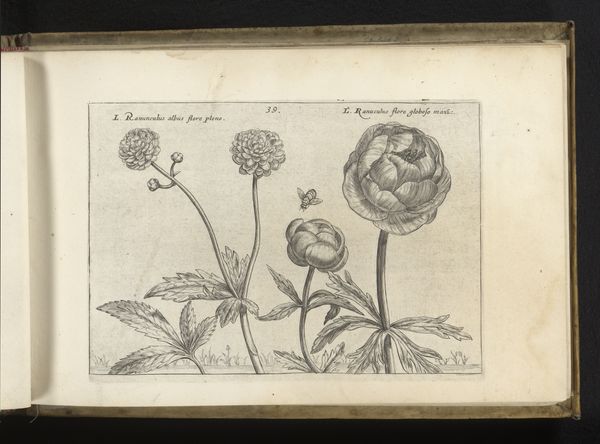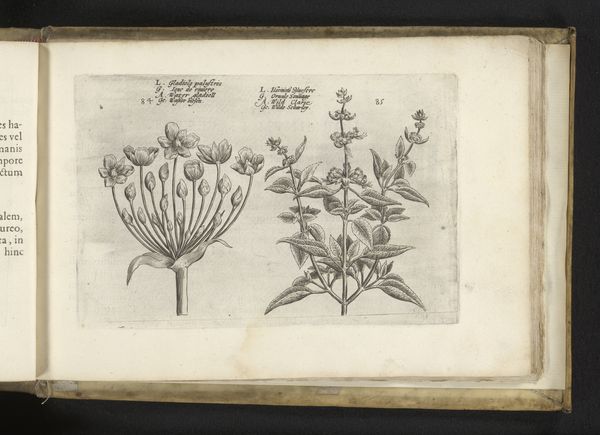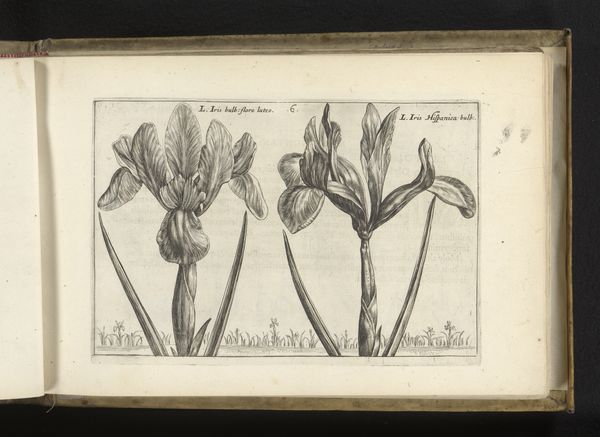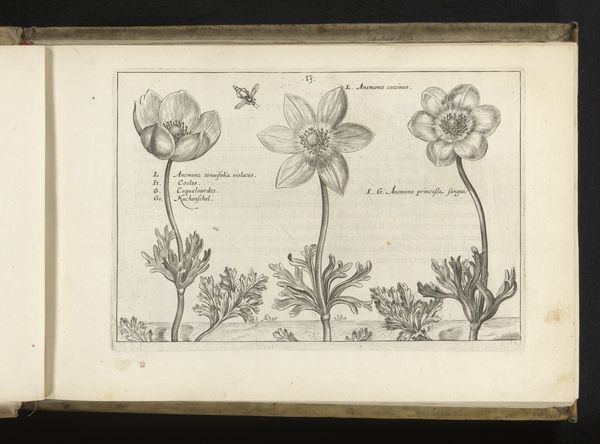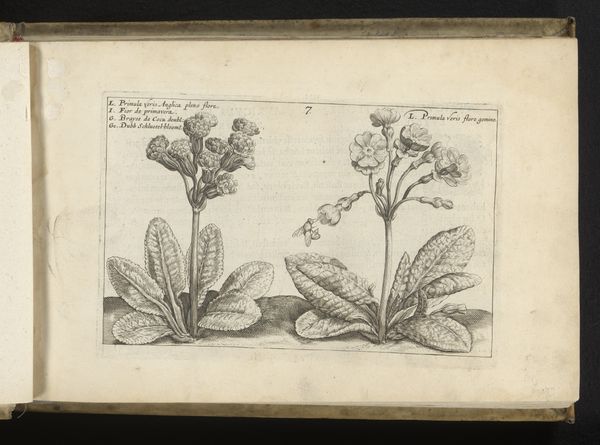
drawing, print, paper, ink, engraving
#
drawing
# print
#
flower
#
paper
#
ink
#
northern-renaissance
#
engraving
Dimensions: height 143 mm, width 212 mm
Copyright: Rijks Museum: Open Domain
This engraving of three carnations was made by Crispijn van de Passe the Younger, likely in the early 17th century. It's an example of the copperplate process, a printmaking technique that requires considerable skill. The artist would have used a tool called a burin to incise lines directly into a copper plate. These lines hold ink, and when pressed onto paper, they create a precise, detailed image. The technique lends itself particularly well to botanical illustration, capturing the delicate textures and forms of each flower. Look closely, and you'll see how the varying weight of the lines creates a sense of depth and shadow. While seemingly simple, copperplate engraving was labor-intensive and costly. This print reflects both the burgeoning interest in natural science during the period, and the increasing commercialization of art, where even botanical studies could be reproduced and disseminated to a wider audience. It reminds us that what we often consider 'fine art' is deeply intertwined with both craft and commerce.
Comments
No comments
Be the first to comment and join the conversation on the ultimate creative platform.
